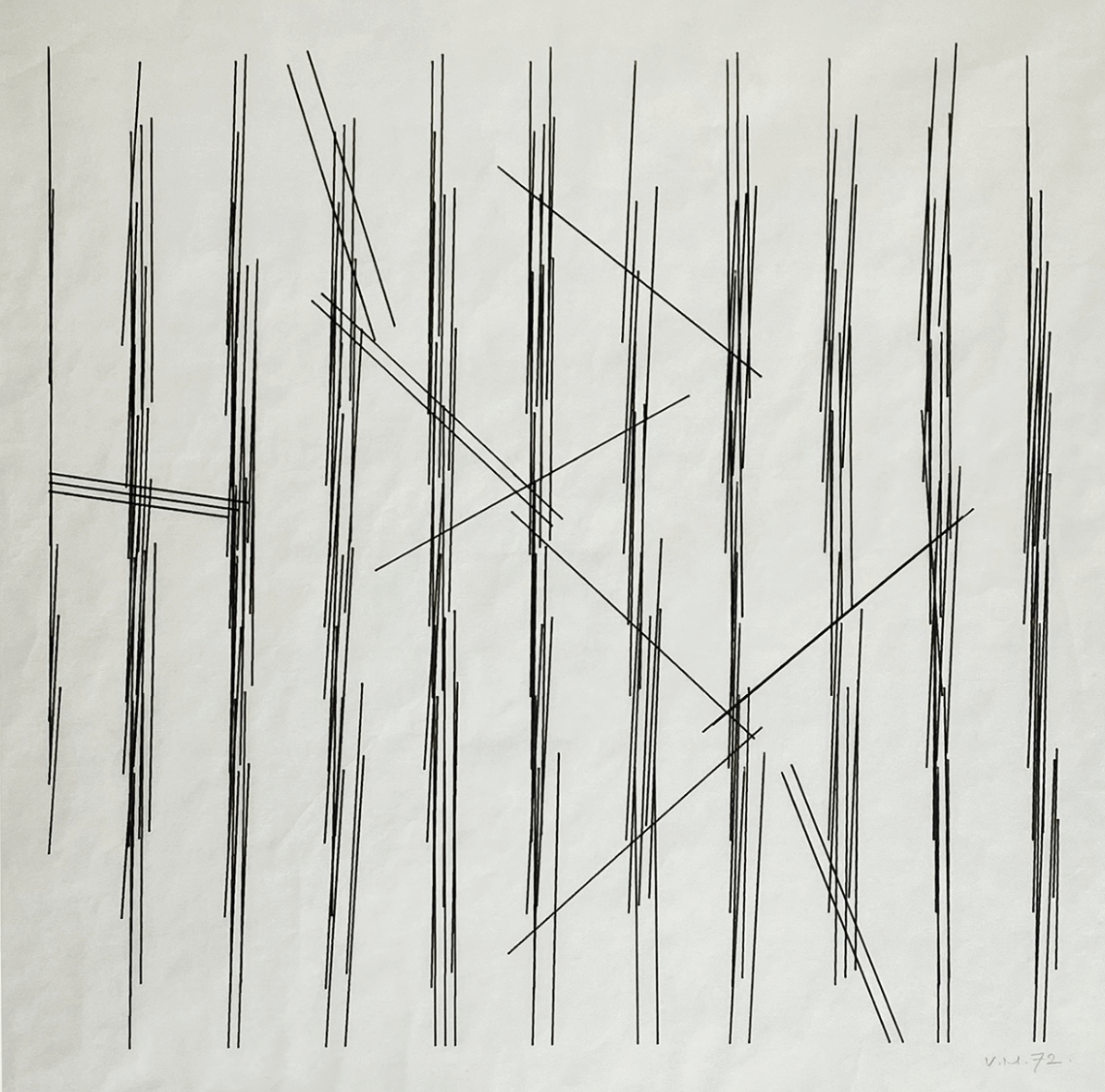
NFTs can help to revive an industry hit hard by the pandemic argue Christos A. Makridis and Soula Parassidis
NFT在疫情期间可以帮助蕴育出一次重大的工业变革,Christos A. Makridis and Soula Parassidis指出

Credit: Vera Molnar, Dispersion, 1985. Courtesy of The Anne and Michael Spalter Digital Art Collection
致谢:Vera Molnar, Dispersion, 1985. Courtesy of The Anne and Michael Spalter Digital Art Collection
It may surprise you that roughly $1.2 billion of NFT sales have so far involved music NFTs. But given its importance to the prehistory of generative art, classical music is yet to realize its market potential in the NFT space. Aside from isolated examples, the classical music industry remains behind the curve, partly due to repeated COVID-19 lockdowns that have forced musicians to find novel solutions to the lack of live recitals. Sadly, a number of studies show that classical musicians have suffered disproportionately in their mental health over the course of the pandemic. While [recent data](https://www.arts.gov/news/press-releases/2022/new-data-show-economic-impact-covid-19-arts-culture-sector#:~:text=Between 2019 and 2020%2C the,decline in the overall economy.) reveals that, between 2019 and 2020, the US arts economy shrank at nearly twice the rate of the economy as a whole, with a 40% decline in motion picture and video production, performing arts presenting, and performing arts companies.
这可能会让你惊讶,目前约12亿美元的NFT销售额中有涉及音乐 NFT。但鉴于古典音乐在生成艺术史上的重要性,它尚未在 NFT 领域中实现其市场潜力。除了一些孤立的例子,古典音乐行业仍然落后于潮流,部分原因是反复的COVID-19封锁措施迫使音乐家找到解决缺乏现场演出的新方法。可悲的是,一些研究表明,古典音乐家在整个疫情期间心理健康状况受到了不成比例的影响。最近的数据显示,在2019年至2020年期间,美国艺术经济以近两倍于整个经济体的速度萎缩,电影和视频制作、表演艺术呈现以及表演艺术公司产生了40% 的下降。
%2C%201983%20(1).png)
Vera Molnar, Rectangles (Ref.85H), 1983. Courtesy of the artist and Galerie Osiris
As we pointed out in our recent whitepaper, in the US at least, artists have been earning below the national average income despite higher levels of educational attainment. Of course, the pandemic also catalyzed an NFT explosion that stands to level the playing field by allowing creators across the arts to build their own markets based on their skills and followings. The most recent available data shows that classical music streaming revenue more than doubled between 2016 and 2018 to $140.8 million worldwide. This proves that classical music has a future as a digital product. What needs to change is how musicians are compensated. By cutting out (or at least eroding the hegemony of) traditional publishers, NFTs allow creators to connect directly with their fans. Platforms like OneOf aim to support musicians by leveraging their brands, while Royal is purpose-built to ensure that artists receive income every time a song is streamed.
正如我们在我们最近的白皮书中指出的那样,至少在美国,尽管受教育程度更高,但艺术家的收入仍低于全国平均水平。当然,疫情也催生了一场NFT的爆炸,通过允许不同领域艺术家在其技能和追随者的基础上建立自己的市场,这有望实现公平竞争。最近的可用数据显示,2016 年至 2018 年间全球古典音乐流媒体收入翻了一倍以上,达到 1.408 亿美元。这证明了古典音乐作为数字产品的未来。需要改变的是音乐家的报酬方式。通过淘汰(或至少侵蚀)传统出版商,NFT允许创作者直接与他们的粉丝联系。像 OneOf 这样的平台旨在通过利用他们的品牌来支持音乐家,而 Royal 则专门设计用于确保艺术家每次播放歌曲时都能获得收入。

Vera Molnar, Untitled, 1985. Courtesy of The Anne and Michael Spalter Digital Art Collection
Classical music has particular qualities that are tailored to the current market for digital art. First, with practically all classical music now in the public domain, digital artists can save on licensing fees if they want to use music to enhance audience experiences. Second, classical music provides an intellectual foundation for the recent surge of interest in code-based art, whose long history reinforces the cultural importance of NFTs in reviving generative practices. Multiple pioneers of generative art have spoken recently of the overlap between musical and visual systems, with Vera Molnar asserting:
古典音乐具有特定的品质,非常适合当前数字艺术市场。首先,由于几乎所有古典音乐都已进入公共领域,数字艺术家在想要使用音乐来增强观众体验时可以节省授权费用。其次,古典音乐为最近激增的基于代码的艺术的提供了知识基础,其悠久的历史强化了NFT在复兴生成实践方面的文化重要性。多位生成艺术的先驱最近已经谈到了音乐和视觉系统之间的重叠,Vera Molnar表示:
